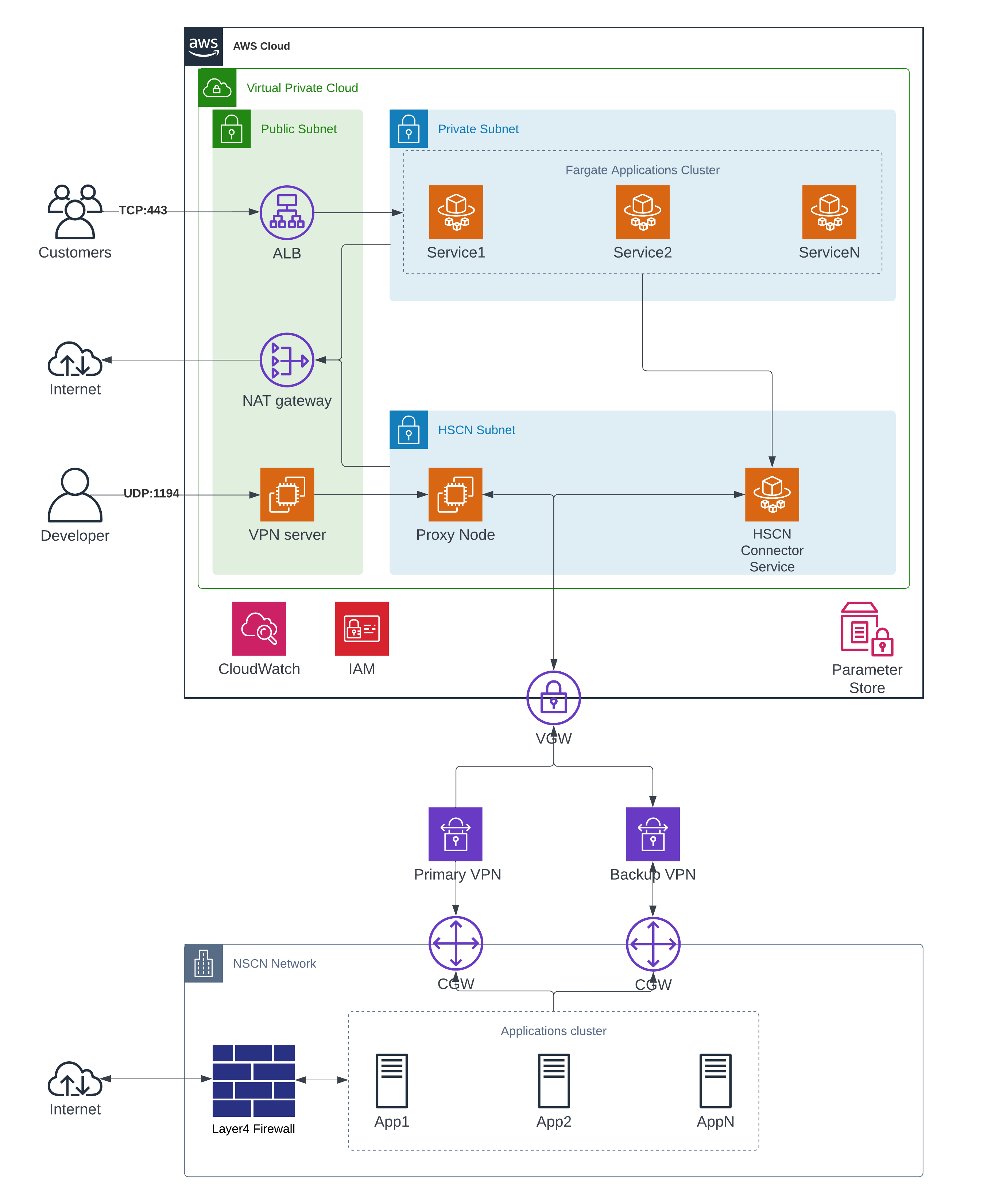Establishing HSCN Connectivity for Healthcare Marketplace
Discover how we designed and implemented a connectivity solution between HSCN and our client’s platform.

Executive Summary
Our Customer
Healthera operates a leading UK healthcare marketplace that provides patients with medicines, healthcare services and products through the largest digital platform of pharmacies and GPs, including national chains and independent providers. The company cooperates with over 1000 pharmacies and GPs and services more than 100,000 patients on a daily basis. Company’s objective is to transform the way healthcare is provided in the UK, from prescriptions to personalized clinical services.
The Obstacles They Faced
With the growing demand on the Great Britain healthcare market, Healthera made a decision to increase the features set of their application for end users. The extension of these features, on top of everything else, implied establishing the connectivity and integration with the National Health and Social Care Network (HSCN).
How We Helped
We designed the architecture of the connectivity solution between HSCN and the Healthera platform and, of course, provided its technical implementation respectively.
The Challenges
HSCN provides a reliable, efficient and flexible way for health and care organizations to access and exchange electronic information. HSCN customers must adhere to strict governance and data security standards, particularly if accessing patients’ data. Healthcare organizations, as HSCN consumers, can buy HSCN connectivity from a wide number of suppliers within a competitive marketplace.
From the first look, required setup of a site-to-site VPN might seem like a trivial task as AWS has a lot of documentation and practical examples on this. But we faced two interesting technical challenges which we had to resolve.
The first one is the small range of IPs pool (CIDR block) that HSCN provides for the whitelisting on their side. To handle this our development team created another CIDR block and attached it to the subnet with other workloads.
The second challenge was related to custom DNS servers on the HSCN side. So we had to configure DNS resolvers in containers with applications to finalize proper connectivity with the network.
This setup requires attention to details and a high level of proficiency, so we don’t recommend doing this type of work on your own if you haven’t had previous successful experience in the field of HSCN connection and HSCN access services. The best way in this situation – to entrust the implementation to software development professionals with a prominent level of exact expertise.
The Solution
To accomplish needed connectivity requirements Romexsoft suggested setting up Site-to-Site VPN connection over IPsec protocol as one of the options offered by HSCN. For getting high availability and fault tolerance HSCN requires to set up two independent VPN connections with two VPN channels and BGP dynamic routes. To perform data exchange logic Romexsoft launched a new proxy service on EC2 instance and configured integration with other Healthera services within VPC private subnets.
HSCN Connectivity for Healthcare Marketplace – Architecture Diagram
Amazon Web Services Utilized
The Results
The end result of this particular project is a new features set that provides significant benefits to the application’s customers.
This establishment of the connectivity allows the Healthera platform:
- to make the registration process faster, if you’re creating a new account with Healthera. NHS Login provides a lot of details already stored in their system
- to make the needed information sharing, confirmation of NHS numbers, as well as sharing of patients Care Plans and access to the Summary Care Records easier
- to rationalize application’s connectivity by obtaining public (internet) and private network services over a single connection
- to get an improved cloud-based Domain Name System (DNS), integrated into the National Cyber Security Center’s Protective DNS, which helps to disrupt the use of DNS for malware distribution and operation.
Verified by AWS
This case study is validated by AWS. Experts and professional auditors from AWS reviewed this case study and verified that we, Romexsoft, have built a functional infrastructure and efficient cloud solution.
It showcases the value that Romexsoft, being a certified AWS Advanced Tier Services Partner, delivers cloud solutions according to AWS standards and best practices.
Why Romexsoft
Romexsoft is an AWS-certified Consulting Partner, trusted Software Development Company and Managed Service Provider, founded in 2004. We help customer-centric companies build, run, and optimize their cloud systems on AWS with creative, elegant, and cost-efficient solutions.
Our key values
- Delivery of quality solutions
- Customer satisfaction
- Long-term partnership
We have successfully delivered 100+ projects and have a proven track record in FinTech, HealthCare, AdTech, and Media industries.
Romexsoft possesses a 5-star rating on Clutch due to its strong expertise, responsiveness, and commitment. 60% of our clients have been working with us for over 4 years.
Related Success Stories


HSCN Connectivity FAQ
HSCN, or the Health and Social Care Network, is a network infrastructure established in the UK to facilitate the exchange of information among healthcare providers. It provides a reliable, efficient, and flexible way for health and care organizations to access and exchange electronic information. HSCN connectivity is essential for healthcare applications like Healthera to integrate with the national health system and provide enhanced services to their users.
Establishing HSCN connectivity can present several technical challenges. For instance, HSCN provides a small range of IP addresses for whitelisting, which may require the creation and attachment of an additional CIDR block to the subnet with other workloads. Another challenge could be the configuration of custom DNS servers on the HSCN side, which may require configuring DNS resolvers in containers with applications to ensure proper connectivity with the network.
HSCN availability on the cloud is ensured through the setup of a site-to-site VPN connection over the IPsec protocol, one of the options offered by HSCN. For high availability and fault tolerance, HSCN requires setting up two independent VPN connections with two VPN channels and BGP dynamic routes. This setup requires a high level of proficiency and attention to detail.
HSCN public cloud connectivity brings several benefits to healthcare applications. For instance, it can make the registration process faster for new users, facilitate the sharing and confirmation of NHS numbers, enable access to Summary Care Records, and allow the application to obtain public and private network services over a single connection. It also provides an improved cloud-based Domain Name System (DNS), integrated into the National Cyber Security Center’s Protective DNS, which helps disrupt the use of DNS for malware distribution and operation.
